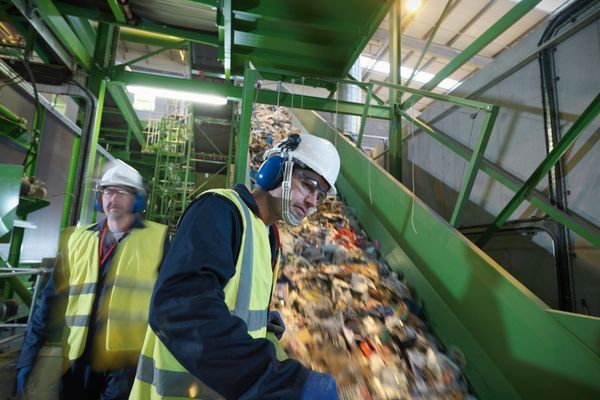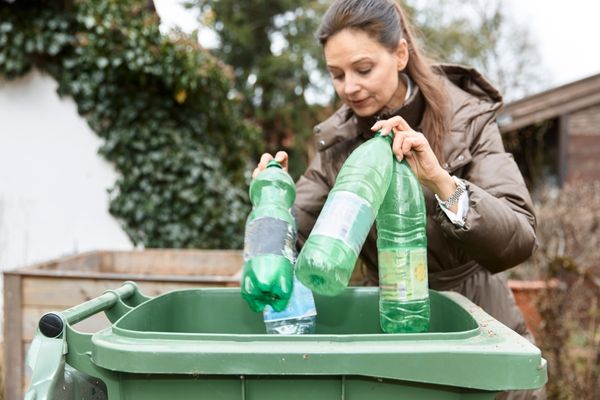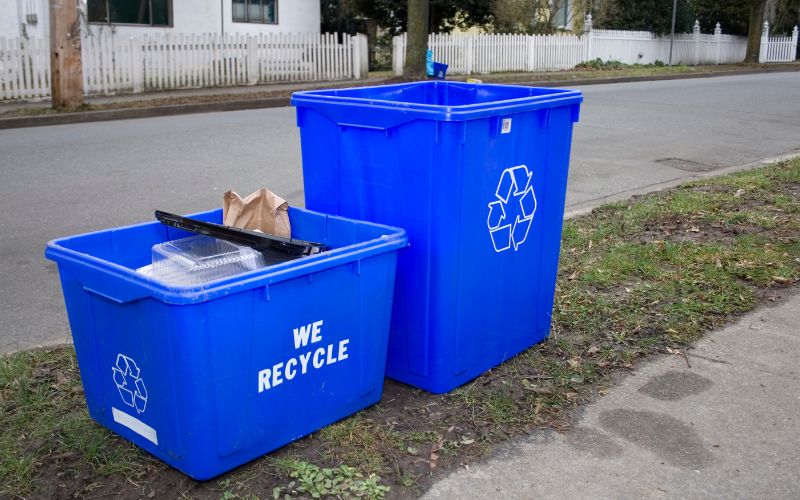What is curbside recycling?
Curbside recycling is a convenient way for individuals and households to recycle their waste. It involves the collection of items such as paper, yard waste, metals, and other recyclable materials from the curb of a residence. The collected materials are then processed for reuse or repurposing. Curbside recycling was first introduced in 1981 in Woodbury, New Jersey, and has since expanded to around 1,050 programs across the United States.
Modern curbside recycling programs are more efficient than ever due to the use of technology such as cameras, tablets, and mechanical arms. The cameras enable drivers to safely maneuver the truck, while the tablets help workers communicate and track progress. The mechanical arms pick up the bins and dump the recyclables in the truck, making it easier and safer for the workers.
Despite its prevalence, curbside recycling programs often vary from city to city, leading to confusion and inconsistent messaging about how to recycle. Furthermore, container deposit laws or “bottle bills” also differ from one state to another. In contrast, some countries have implemented unified and proactive recycling programs, making it easier for people to participate in waste reduction efforts.
The first recycling: When did recycling start?
Curbside recycling could be said to have begun in the medieval period when “cart men” would travel from home to home collecting refuse. But the curbside services we know today didn’t really start until around the 1960s or 1970s. Some early programs were established to collect yard waste, metals, and paper in the USA.
In the 1970s, the environmental movement began to take off and recycling efforts became more widespread. Early curbside recycling programs included Woodbury, New Jersey’s program, implemented in 1981, which became the first curbside recycling program and collected yard waste, metals, and paper. In 1988, there were 1,050 programs across the US and by 1992, there were 5,202. The first Canadian “blue box” curbside recycling project was also implemented in Kitchener/Waterloo with 1,500 residents participating.
By the late 1980s, many countries had implemented similar programs. Today, curbside recycling programs are common in many cities around the world.
Recycling Timeline
Head to our other article to see a more detailed timeline for recycling.
Modern Recycling
Recycling as we know it looks a little different from how it did back in the 1970s.

Expansion of Curbside Recycling Programs
The expansion of curbside recycling programs has significantly impacted the history of recycling. Before the introduction of curbside programs in the 1980s, recycling was a limited and inconvenient process. Residents had to drive to designated waste collection sites or drop off their recyclables at local markets. However, curbside programs allowed people to conveniently sort and recycle their waste from their own homes.
This increased the rates of recycling significantly. In 1960, just over 6 percent of municipal solid waste was recycled, but by 2017, this number had increased to 35 percent. This is largely thanks to curbside programs making recycling more convenient and accessible. Furthermore, these programs have allowed for the possibility of separate waste streams and the collection of different types of materials, such as yard waste, metals, and paper.
However, the lack of uniformity and rules between different communities has been a major challenge for curbside programs. It’s possible for people living in the same metropolitan area to have vastly different experiences with recycling. This is an issue that needs to be addressed in order to increase the efficiency of curbside programs across the globe.
Plus, access to curbside recycling is not yet available to all. Unfortunately, some people still do not have access to curbside programs and still can only access programs through recycling depots.
The Rise of Single-Stream Recycling
Single-stream recycling is the process of allowing people to put all their recyclable materials into one bin for collection and sorting. This process became popular in the United States, starting in California, as a way to make recycling easier and more efficient for households and waste collection workers. It replaced source-separated or multi-stream recycling, which required sorting materials into separate bins. This process was seen as too labor-intensive and inefficient, requiring too much time, effort, and space. Additionally, the increased number of separated materials became difficult to transport, as collection trucks could only have a certain number of compartments. Single-stream recycling streamlined the process and enabled the expansion of recycling programs, broadening the number of materials that could be accepted. Despite the increased public participation rates that single-stream recycling brings, it requires additional sorting at the waste facility.
Recycling Industry Needs
The recycling industry faces a number of challenges that need to be addressed in order to ensure the system remains effective and to create more jobs and environmental benefits. One of the main challenges facing the recycling industry is the lack of understanding of what materials can be recycled, how materials can be recycled, and where to send different materials. This often leads to improper sorting and disposal of recyclables, contaminating the system.

Additionally, the recycling infrastructure has not kept up with the changes in the waste stream, and communication between product manufacturers and the recycling industry needs to be improved to accommodate new materials. Domestic markets for recycled materials need to be strengthened, and communication across the different sectors of the recycling system needs to be improved in order to create innovative markets.
Ensuring the success of the recycling industry is essential for curbside recycling to work effectively. Curbside recycling relies on the proper sorting and disposal of materials, as well as a healthy market for recycled materials. It’s also helpful for communities to understand the importance of curbside recycling and the challenges the industry faces.
The technology of recycling facilities
A recycling facility is a materials recovery facility (MRF) designed to sort, separate, and clean recyclables collected from curbside recycling programs. Sortation facilities use a combination of automated and manual processes to separate and categorize different types of materials by weight, color, and chemical composition. This allows the recyclables to be diverted into the correct collection channels.
Sortation facilities can greatly improve the efficiency and cost-effectiveness of curbside recycling programs. By using automated sorting processes, a truckload of material can be sorted in less than an hour. This reduces the labor costs associated with manual sorting, allowing curbside recycling programs to operate at a lower cost. Additionally, automated sorting reduces the risk of contamination among recyclables, which can render entire batches of material unusable. This improves the quality of recycled material, increasing its value on the market.
Advances in recycling technology can also improve the quality of the sorting process. Optical sorters, lasers, and magnets are now used to recognize and sort products by their original shape. This makes it easier for crumpled cans, bottles or cartons to be correctly sorted.
Recycling Crisis
The recycling crisis is a global issue that has been brought about by the accumulation of recyclable materials in the environment due to inadequate collection and processing. Many people are unaware of what materials can be recycled and how to properly sort and dispose of them, leading to the contamination of recyclables with other materials. This contamination has caused many municipal recycling programs to be severely limited or closed down and led to an increase in the amount of waste that is sent to landfills and incinerators rather than being recycled.

Additionally, curbside recycling has suffered due to the lack of domestic markets for recycled materials, as many of them are exported abroad. In 2018, China’s ban on importing 24 categories of recyclable materials, and the subsequent introduction of a 0.5% contamination standard had a considerable effect on curbside recycling in the US. It led to the closure of many programs, as they became too expensive to run.
Change is coming
In the coming years, we can expect to see the recycling industry continue to invest in more efficient and cost-effective technology. This includes optical sorters, automation, and closed-loop recycling, which can help to reduce contamination and waste materials by up to 40%. We’re also likely to see an increase in Extended Producer Responsibility (EPR) initiatives, which require companies to take responsibility for the management of their waste.
The increasing awareness of waste’s environmental impacts has also been a major factor in the shift towards curbside recycling. Consumers are becoming more conscious of their purchasing decisions, leading to an increase in reuse and recycling of products. This can be seen with the rise of B Corps, companies that support the environment and redefine success in business.
Overall, curbside recycling is looking to be a major part of our future. By continuing to invest in technology and awareness, we can create a greener and more sustainable future.
The part we play in curbside recycling
At a consumer level, we can expect to see more people embracing a zero-waste model, and more businesses adopting sustainable practices. We’ll also likely see more corporate and residential sponsorships to support recycling initiatives, helping to make the industry more viable and financially secure. Increased public awareness and education about recycling are necessary to ensure that people understand the importance of this industry and the impact it has on the environment. Ultimately, these changes will help to ensure that recycling becomes an integral part of our future.














